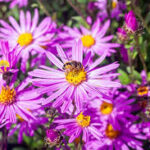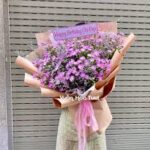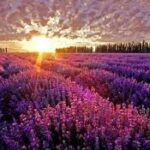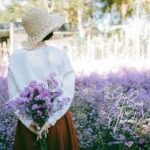
Throughout the history of art and literature, flowers have served as captivating and enduring motifs, inspiring some of the most iconic and celebrated masterpieces across diverse artistic genres. From paintings and sculptures to poems and novels, the beauty, symbolism, and evocative qualities of flowers have been explored and interpreted by artists and writers around the world. In this extensive exploration, we delve into famous artworks and literary works that feature flowers as central themes, reflecting the profound impact of botanical imagery on creative expression.
**1. Paintings**
Flowers have been a favorite subject for painters across centuries and cultures, showcasing the mastery of color, form, and symbolism. Some notable paintings that prominently feature flowers include:
– **”Sunflowers” by Vincent van Gogh:** This series of paintings by van Gogh captures the vibrant beauty of sunflowers in various stages of bloom, conveying a sense of joy and vitality through bold brushwork and intense colors.
– **”Water Lilies” by Claude Monet:** Monet’s iconic series of water lilies depicts the tranquil beauty of these aquatic flowers in his garden at Giverny. The paintings explore the interplay of light, color, and reflections, conveying a sense of serene contemplation.
– **”The Birth of Venus” by Sandro Botticelli:** In this Renaissance masterpiece, Venus emerges from a sea shell surrounded by a lush floral landscape, symbolizing love, beauty, and renewal in classical mythology.
– **”The Roses of Heliogabalus” by Sir Lawrence Alma-Tadema:** This Victorian painting depicts a decadent scene of rose petals cascading upon guests at a banquet, evoking themes of indulgence and sensory pleasure.
– **”Irises” by Édouard Manet:** Manet’s still life of irises exemplifies his mastery of capturing the essence and texture of flowers with bold brushstrokes and a restrained color palette.
**2. Sculptures and Installations**
Floral motifs have also inspired sculptors and installation artists to create dynamic and immersive works of art. Examples include:
– **”The Gates of Paradise” by Lorenzo Ghiberti:** The intricate bronze doors of the Florence Baptistery feature relief sculptures of biblical scenes framed by decorative garlands of foliage and flowers, showcasing Ghiberti’s mastery of perspective and composition.
– **”Floating Piers” by Christo and Jeanne-Claude:** This large-scale environmental installation consisted of a series of floating walkways covered in bright yellow fabric, creating a surreal and immersive experience amidst the natural landscape.
**3. Literature**
Flowers have been a recurring motif in literature, symbolizing themes of beauty, fragility, and the cycle of life. Some notable literary works that prominently feature flowers include:
– **”The Secret Garden” by Frances Hodgson Burnett:** This beloved children’s novel follows the story of a young girl who discovers a neglected garden filled with hidden blooms, paralleling themes of personal growth and renewal.
– **”Ode to a Nightingale” by John Keats:** In this romantic poem, Keats uses the nightingale and its surroundings, including flowers like violets and musk-roses, to explore the themes of transience and the longing for immortality.
– **”The Black Tulip” by Alexandre Dumas:** This historical novel revolves around the quest to breed a rare black tulip, symbolizing the pursuit of beauty and perfection amidst political intrigue.
– **”The Flowers” by Alice Walker:** In this short story, Walker explores themes of innocence and loss through the perspective of a young girl who discovers a disturbing secret in a field of flowers.
**4. Floral Symbolism and Cultural Context**
In addition to their aesthetic appeal, flowers often carry symbolic meanings that resonate within specific cultural contexts. For example:
– In Japanese culture, cherry blossoms (sakura) symbolize the transience of life (mono no aware) and are celebrated during hanami (flower viewing) festivals.
– In Western art and literature, roses symbolize love and passion, while lilies represent purity and rebirth, often depicted in religious and mythological contexts.
– In Victorian England, the language of flowers (floriography) was used to convey messages and sentiments through specific floral arrangements.
**5. Botanical Gardens and Cultural Institutions**
Botanical gardens and cultural institutions preserve and showcase the beauty and diversity of floral motifs through exhibitions and educational programs. Institutions like the New York Botanical Garden and the Royal Botanic Gardens, Kew, host botanical art collections and floral-themed events that celebrate the intersection of art, nature, and culture.
In summary, the enduring allure of flowers as subjects of artistic and literary exploration reflects their universal symbolism and evocative qualities. Famous artworks and literary works inspired by flowers capture the essence of beauty, emotion, and cultural expression, highlighting the profound impact of botanical imagery on human creativity and imagination.
**Famous Artworks and Literary Works Inspired by Flowers (Part 2)**
In continuation of our exploration into the profound influence of flowers on art and literature, we delve deeper into renowned masterpieces and literary compositions that prominently feature flowers as central themes. From classical paintings to modern novels, the evocative symbolism and aesthetic beauty of botanical imagery continue to inspire and captivate audiences across the globe.
**6. Impressionist Landscapes and Floral Studies**
The Impressionist movement revolutionized the representation of nature, capturing the ephemeral qualities of light and color in outdoor settings. Artists like Claude Monet, Pierre-Auguste Renoir, and Berthe Morisot depicted gardens and meadows adorned with blossoming flowers, emphasizing the play of atmosphere and natural light. Monet’s “Garden at Giverny” series and Renoir’s “Woman with a Parasol” exemplify the Impressionist fascination with floral motifs and the transient beauty of the natural world.
**7. Dutch Golden Age Still Lifes**
During the Dutch Golden Age, painters excelled in the genre of still life, portraying intricate arrangements of flowers, fruits, and objects with meticulous detail. Artists such as Rachel Ruysch and Jan Davidsz de Heem created sumptuous floral compositions that symbolized wealth, abundance, and the brevity of life. The floral still lifes of this period convey a sense of opulence and contemplation, inviting viewers to reflect on themes of mortality and material abundance.
**8. Symbolist Art and Mystical Imagery**
The Symbolist movement in art explored mystical and dream-like themes, often incorporating flowers as symbols of spiritual awakening and inner transformation. Artists like Gustav Klimt and Odilon Redon portrayed ethereal landscapes populated with symbolic flora, blurring the boundaries between reality and the subconscious. Klimt’s “The Kiss” features intricate patterns of intertwining flowers, embodying themes of love and transcendence.
**9. Pre-Raphaelite Brotherhood and Nature Symbolism**
The Pre-Raphaelite Brotherhood, a group of British artists in the 19th century, emphasized the detailed depiction of nature and medieval romanticism in their works. Artists like Dante Gabriel Rossetti and John William Waterhouse often portrayed women adorned with flowers, embodying themes of beauty, sensuality, and the connection between humanity and the natural world. Rossetti’s “Proserpine” and Waterhouse’s “Ophelia” are iconic examples of Pre-Raphaelite paintings that incorporate floral symbolism.
**10. Floral Allegories in Baroque Art**
In Baroque art, flowers were often used as allegorical symbols to convey moral and spiritual themes. Caravaggio’s “Basket of Fruit” and Peter Paul Rubens’ “The Four Continents” feature symbolic arrangements of flowers and fruits that allude to themes of abundance, transience, and the cycle of life. Baroque artists infused everyday objects with symbolic significance, inviting viewers to contemplate deeper meanings beneath surface appearances.
**11. Floral Poetry and Romanticism**
In literature, poets have celebrated the beauty and symbolism of flowers through evocative verses and lyrical imagery. Romantic poets like William Wordsworth and Percy Bysshe Shelley frequently incorporated floral motifs into their nature poetry, using flowers as metaphors for human emotions and existential themes. Wordsworth’s “I Wandered Lonely as a Cloud” (Daffodils) and Shelley’s “The Sensitive Plant” exemplify the Romantic fascination with botanical symbolism and the sublime beauty of nature.
**12. Floral Novels and Symbolic Narratives**
In the realm of fiction, flowers often serve as symbolic motifs that enrich narrative depth and thematic resonance. Novels like “The Great Gatsby” by F. Scott Fitzgerald and “The Secret Garden” by Frances Hodgson Burnett feature gardens and floral landscapes that symbolize renewal, growth, and hidden emotions. Fitzgerald’s evocative descriptions of gardens and flowers evoke themes of longing and nostalgia, while Burnett’s exploration of a secret garden symbolizes the transformative power of nature.
**13. East Asian Art and Floral Elegance**
In East Asian art and literature, flowers hold profound cultural significance and aesthetic beauty. Traditional Chinese ink paintings and Japanese woodblock prints often depict seasonal flowers like cherry blossoms, plum blossoms, and lotus flowers, embodying themes of harmony with nature and the cycles of life. Haiku poets like Matsuo Bashō and Li Bai celebrated the fleeting beauty of flowers in their verses, capturing moments of contemplation and spiritual insight.
**14. Contemporary Art and Floral Abstraction**
In contemporary art, artists continue to reinterpret floral motifs through innovative and experimental approaches. From abstract compositions to immersive installations, contemporary artists like Yayoi Kusama and Ai Weiwei explore the symbolic and sensory qualities of flowers in their artworks. Kusama’s “Infinity Mirrored Room” installations and Weiwei’s “Sunflower Seeds” challenge traditional notions of botanical representation, inviting viewers to engage with flowers in new and thought-provoking ways.
**15. Botanical Science and Artistic Exploration**
The intersection of botanical science and artistic exploration has led to interdisciplinary collaborations that bridge art and nature. Botanical illustrators like Margaret Mee and Maria Sibylla Merian produced detailed drawings of plants and flowers, advancing scientific knowledge while preserving botanical diversity through artistic expression. Contemporary botanical artists continue to celebrate the beauty and complexity of flora, highlighting the importance of conservation and ecological awareness.
In summary, the rich legacy of famous artworks and literary works inspired by flowers reflects the universal appeal and enduring symbolism of botanical imagery in human creativity and cultural expression. Explore the diverse interpretations and artistic innovations that celebrate the beauty, symbolism, and transformative power of flowers across artistic genres and historical periods.
—
This comprehensive exploration illuminates the rich tapestry of famous artworks and literary compositions that feature flowers as central themes, underscoring their enduring significance and cultural resonance in the realms of art and literature. Discover the timeless allure and symbolic depth of floral motifs through iconic masterpieces and creative expressions that continue to inspire and captivate audiences worldwide.










